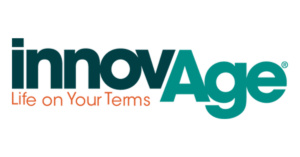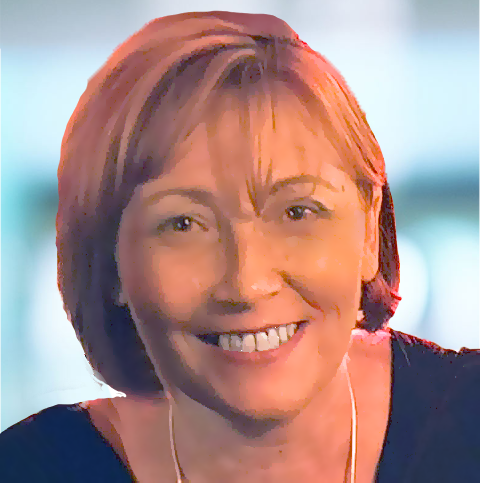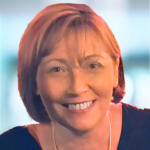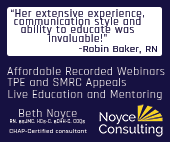by Kristin Rowan, Editor
New Fall Prevention Study: An Interview with Dr. Ann Wells
Fall Prevention Month
September was National Fall Prevention month. Accidental falls are the number one cause of injury and death among adults over the age of 65. Fall Prevention month attempts to raise awareness on preventing falls, reducing the risk of falls, and helping older adults live without the fear of falling. The National Council on Aging also promotes advocacy on behalf of fall prevention funding and offers training and other materials to help prevent falls. Read our complimentary article this week about a nurse charged in the death of a patient who fell here.
National PACE Awareness Month
September was also PACE Awareness Month. The Program of All-Inclusive Care for the Elderly )PACE) is a Medicare and Medicaid program that helps seniors with long-term care needs to live independently and age in place. The program includes an interdisciplinary team of professionals working together to coordinate care. There is no co-pay, deductible, or coverage gap and the amount paid each month doesn’t change, no matter what care services the patient needs. All Medicare and Medicaid services are covered as well as medically-necessary care and services that are not typically covered. Coverage includes prescription drugs, doctor care, transportation, home care, checkups, hospital visits, and nursing home stays when necessary. Access more information about PACE here.

InnovAge has been tapped to participate in a fall prevention study. The study is conducted by LeaHD, a research and training center established in partnership with Brown University, Boston University, and University of Pittsburgh in the Center on Health Services Training and Research. The Rowan Report sat down with Dr. Ann Wells, Chief Quality and Population Health Officer of InnovAge. Dr. Wells said of the study, “[it] will help us better understand the multi-faceted factors contributing to falls among seniors and develop intervention strategies tailored to their unique needs.”
Dr. Ann Wells, Chief Quality and Population Health Officer
Rowan Report:
Dr. Wells, thank you for taking the time to speak with me today. Why don’t we start with a little background on you. How did you come to be involved in elder care and PACE programs?
Dr. Ann Wells:
By trade, I am in internal medicine doctor, focused on the geriatric population. I have spend 20 years in medical leadership working in population health. Population health is the approach to healthcare that evaluates and improves outcomes in subgroups with similar needs and the populations as a whole through team care and analytics. Through my work in medical leadership and population health, I was approached by InnovAge to be part of their leadership team.
RR:
You mentioned the PACE program. What do you think is the key difference, or differences, between PACE programs and other types of senior care?
Ann:
The PACE model is health care’s best kept secret and we don’t want it to be a secret anymore. Most patients and families don’t want institutional care. 86% of seniors value remaining in the communities in which they live.
In order to qualify for PACE programs, the patient has to qualify for nursing home levels of care. The program delivers services designed to help them stay in the community. PACE leverages an 11-member interdisciplinary team that includes a primary care provider, a registered nurse, a driver, a master-level social worker, PT, OT, a dietician, a PACE center manager, a home care coordinator, and a personal care attendant. The team coordinates care for medication, medical care and transportation with wrap-around social support and in-home support to help with bathing, shopping, and dressing. They also coordinate specialty care, make appointments with contracted specialists, provides transportation and a chaperone if needed, sends medical records in advance of the appointment, and gets notes back from the specialist.
Participants can come to a center for primary care, PT, or OT. They can also enjoy the center for socialization and activities. Patients provide permission to talk to each caregiver to make sure they are getting the care they need. Almost 90% of patients are dual-eligible. Roughly 10% are Medicaid only. The small remainder are Medicare only and pay the difference out of pocket.
RR:
There is a lot of information about the PACE program that I didn’t know before. Thank you for that. Can you tell us a little about InnovAge?
Ann:
InnovAge is the largest provider of the PACE program based on number of participants. They are both a delivery arm and a health plan. InnovAge administers care from 20 centers in six states.
RR:
And what your role is as Chief Quality and Population Health Officer?
Ann:
The Clinical Value Initiative aims to ensure the company is managing revenue and participant expenses including risk adjustments, ensuring the most accurate risk score, resource management, payment integrity or a claims audit process, and network optimization. Through these initiatives, the average inpatient rate for hospital admissions was 5.5% and the average time from enrollment to placement in a nursing home is three years. These initiatives and the PACE program are reducing hospitalizations for participants and keeping patients in their homes and in their communities longer.
RR:
September was National Fall Prevention Month. The number of injuries and deaths due to falls among seniors over age 65 is staggering. But, InnovAge, using the PACE model, has reduced falls. How does that program work?
Ann:
Any fall that has a major fracture is very difficult to recover from. InnovAge leverages the STEADI program. Stopping Elderly Accidents, Deaths, and Injuries (STEADI). This program includes screening, assessing, and intervening.
Screening
All participants are asked intake questions to screen for risk. Have you fallen in the last year? Do you have a fear of falling? Statistically, once a patient has fallen once, the risk is much higher for another fall.
Assessing
At enrollment, and again yearly, the patient receives an in-home assessment with an environmental safety evaluation. We look at things like lighting, rugs, grip bars, ramps, a non-slip rug in the bathroom. PACE arranges for installation and payment for any items they might need to lower the risk of falls. OT & PT conduct yearly evaluations as well. Do they need a walker? Do they have proper footwear? Have they had a recent eye screening and do they have glasses? They also evaluate leg strength and balance. If there is a deficit, the patient can do PT at the center.
In addition to the in-home assessment, we conduct a root cause analysis if there is a fall to determine why they fell and what they need to prevent a future fall. Clinical pharmacists also evaluate medicine regiments and optimize medications to reduce or eliminate side effects and improve safety.
Intervention
When there is a patient at high risk for a fall, due to any of the factors we find in the screening and assessment, we employ some intervention. PERS units, emergency alert pendants and wristwatches, are provided for high-risk patients. Units with fall detection and emergency activation buttons place automatic calls to a call center. The call center will try to contact the patient and send an ambulance if they can’t be reached or need assistance.
RR:
InnovAge has recently been selected to participate in a national study for the prevention of falls. Tell us about that study and how InnovAge will participate.
Ann:
LeaHD approached InnovAge to help improve their training for chronic care. InnovAge has a population that aligns with their research. The research topic is to evaluate whether they can predict risk of falling with new enrollees. From there, we will assess whether we can create more tailored interventions to lower risk. The hope is that the study will inform us, as an industry, what we should be asking a new patient to determine their actual risk of falling. In turn, the study will inform caregivers on how they can identify high risk patients and prevent future falls.

RR:
What is the timeline and goal of the study?
Ann:
The study will run for one year, starting in October, 2024. There is a data scientist working on the project who will conduct and write the study. We are hoping to publish sometime in 2026. The goal is finding interventions; gaining insight on which systems can be executed to reduce the risk.
RR:
That sounds fascinating. I can’t wait to read the results of the study. Is there anything else about InnovAge that you’d like to share?
Ann:
Just that our mission is to help seniors live independently in the community and to advocate for the PACE model of care. We are excited to have three new centers – one in California and two in Florida. The goal is to spread the PACE model and grow the individual centers. InnovAge is the largest provider of PACE based on number of patients enrolled. We are dedicated to expanding and serving more seniors across the country.
RR:
Thank you, Dr. Wells for your time and your insight. It’s been a pleasure talking with you. Please stay in touch and keep The Rowan Report updated on the progress of your study.
# # #


Kristin Rowan has been working at Healthcare at Home: The Rowan Report since 2008. She has a master’s degree in business administration and marketing and runs Girard Marketing Group, a multi-faceted boutique marketing firm specializing in event planning, sales, and marketing strategy. She has recently taken on the role of Editor of The Rowan Report and will add her voice to current Home Care topics as well as marketing tips for home care agencies. Connect with Kristin directly kristin@girardmarketinggroup.com or www.girardmarketinggroup.com
©2024 by The Rowan Report, Peoria, AZ. All rights reserved. This article originally appeared in Healthcare at Home: The Rowan Report. One copy may be printed for personal use: further reproduction by permission only. editor@therowanreport.com



